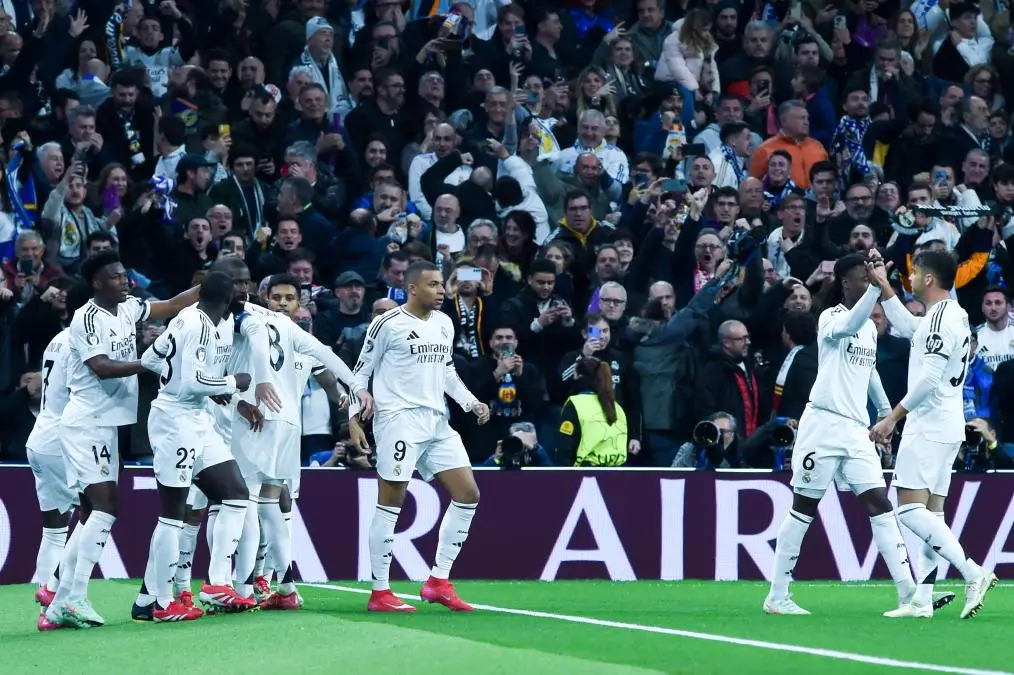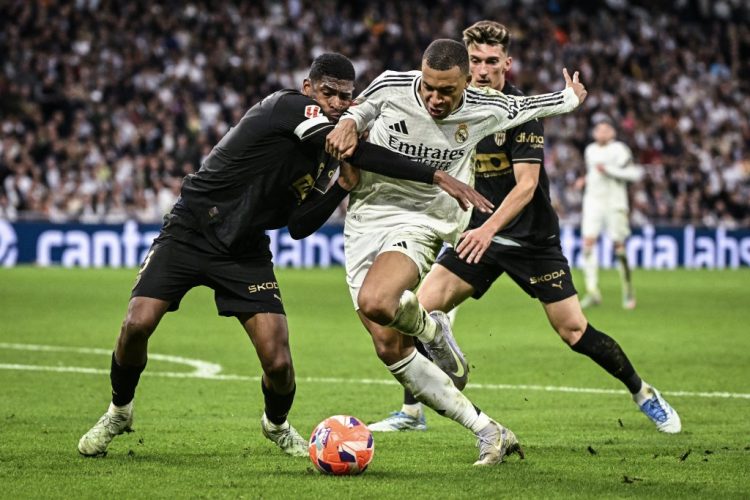Introduction
Real Madrid is one of the most prestigious and successful football clubs in the world, known for its rich history, iconic players, and dominance in both Spanish and European football. The club’s legacy, built on numerous La Liga titles and Champions League triumphs, has made it a benchmark of excellence. However, like all major football clubs, Real Madrid must constantly adapt to the ever-evolving football landscape to remain competitive. This means keeping a close eye on the transfer market and making strategic moves to strengthen their squad while maintaining the club’s tradition of success.
In recent years, Real Madrid has gone through a period of transition. The departure of legendary players such as Cristiano Ronaldo in 2018 marked the end of an era, and the club has been working to replace not only Ronaldo’s goals but also the overall attacking threat he provided. At the same time, the team has undergone an aging process, with several key players like Sergio Ramos, Luka Modrić, and Karim Benzema getting older, prompting the need for fresh talent to secure the club’s future.
Under the leadership of Florentino Pérez, Real Madrid has made several interesting moves in the transfer market, both in terms of player acquisitions and departures. This article will explore how Real Madrid’s squad has evolved in recent years and critically assess their latest transfer market activities. What does the addition of new players mean for the team’s tactical setup, and how does it reflect the club’s future plans?
Chapter 1: Real Madrid’s Recent Squad Transition
To understand the significance of Real Madrid’s recent transfer market actions, it’s essential to look at the overall squad transition that has taken place since the departure of Cristiano Ronaldo. Real Madrid’s attacking and defensive setups have undergone changes, and the club has sought to replace aging key players with younger, promising talents.
For instance, Karim Benzema, the club’s talisman since Ronaldo’s departure, has entered his twilight years, while the club’s midfield, once driven by the trio of Modrić, Toni Kroos, and Casemiro, has seen a shift in dynamics. The defense also underwent significant changes, with Sergio Ramos and Raphaël Varane leaving the club. This has necessitated the arrival of new players to not only fill these gaps but also to provide long-term stability.
This chapter will discuss the key departures of the past few years, including Cristiano Ronaldo (2018), Sergio Ramos (2021), and Raphaël Varane (2021), and how Real Madrid has adapted to these departures by bringing in new faces.
Chapter 2: Key Signings in Recent Transfer Windows
In recent transfer windows, Real Madrid has made some strategic signings that reflect their long-term vision of rebuilding their squad. Key acquisitions have focused on reinforcing the team’s attacking depth, midfield strength, and defensive solidity. Some of the standout signings include:
- Eden Hazard (2019): The Belgian winger was brought in to replace the attacking influence of Cristiano Ronaldo, but his time at the club has been marred by injuries. His acquisition was seen as part of the club’s effort to rejuvenate their attack and give them a world-class forward to build around.
- Luka Jovic (2019): The Serbian striker was signed to provide a long-term solution to the center-forward position, but his impact has been limited, and he struggled to establish himself as a regular starter.
- Ferland Mendy (2019): The French left-back has provided depth in defense, ensuring that Real Madrid has a reliable alternative to the aging Marcelo.
- Vinícius Júnior (2018) and Rodrygo Goes (2019): These two young Brazilian wingers were signed with an eye toward the future, representing a new wave of talent to lead the team’s attacking line.
- Eduardo Camavinga (2021): The young French midfielder’s arrival was a major coup for Real Madrid, as he represents a significant investment in the club’s future midfield. His high potential has already been showcased, and many expect him to play a pivotal role in the coming years.
- Aurelien Tchouaméni (2022): Another promising French midfielder, Tchouaméni was brought in to bolster Real Madrid’s midfield and provide a long-term replacement for Casemiro, who left for Manchester United. Tchouaméni has already shown glimpses of his talent, and he is expected to be a key figure in Madrid’s future.
This chapter will analyze these signings in detail, examining their impact on the team’s overall performance, their potential for the future, and how they align with Real Madrid’s strategy of blending youth and experience.
Chapter 3: The Departure of Key Players – The Changing of the Guard
While Real Madrid has brought in a host of talented players, they have also seen key figures depart in recent seasons. The exits of Sergio Ramos, Raphaël Varane, and Casemiro have undoubtedly changed the structure of the squad. The departure of Ramos, in particular, signified the end of an era. Ramos had been the heartbeat of Real Madrid’s defense for over a decade, and his leadership on and off the pitch was invaluable.
This chapter will explore the impact of these departures, the reasons behind them, and how Real Madrid has adapted to life without these iconic figures. How well have their replacements (such as Éder Militão and Antonio Rudiger) integrated into the team? Have the exits affected the team’s overall balance, particularly in terms of leadership, and how has coach Carlo Ancelotti managed these transitions?
Chapter 4: The Role of Youth – Focusing on Future Stars
One of the most exciting aspects of Real Madrid’s recent transfer strategy is their emphasis on signing young, highly talented players with the potential to become world-class stars. With the signings of players like Vinícius Júnior, Rodrygo Goes, Eduardo Camavinga, and Aurelien Tchouaméni, Real Madrid is positioning itself for long-term success, blending experience with an influx of youthful energy and potential.
Vinícius Júnior, for instance, has already emerged as one of the club’s most promising attackers, showing tremendous growth and maturity in his game. Rodrygo Goes has also demonstrated flashes of brilliance, contributing with important goals and assists. The addition of Camavinga and Tchouaméni has bolstered the midfield and given the team an exciting new dynamic.
This chapter will focus on the importance of youth in Real Madrid’s long-term strategy. We will analyze how these young players fit into the team’s future, the potential they hold, and how Ancelotti is nurturing their development while maintaining the club’s competitive edge in the short term.
Chapter 5: Real Madrid’s Recent Transfer Market Moves – Strategic or Reactive?
In recent transfer windows, Real Madrid has been both strategic and reactive in their dealings. The club has made calculated moves to ensure that they are always prepared for the future while maintaining their competitiveness in the present. The acquisition of Tchouaméni and Camavinga, for example, was a long-term investment in the midfield, while the signing of Antonio Rudiger addressed an immediate need for a reliable and experienced center-back.
However, some of the club’s decisions have also been reactive to circumstances—such as the signing of Eden Hazard after the departure of Cristiano Ronaldo. Hazard’s injury issues have, unfortunately, prevented him from living up to his potential at the club, but this move was indicative of the club’s attempts to fill the void left by the Portuguese forward.
This chapter will analyze Real Madrid’s recent transfer market moves and assess whether they reflect a long-term vision or are simply reactive measures to short-term gaps in the squad. Is Real Madrid building a new dynasty, or is the club trying to plug holes left by departing stars?

Chapter 6: The Tactical Implications of Real Madrid’s Squad Changes
The evolution of Real Madrid’s squad has significant tactical implications. Under Carlo Ancelotti, the team has adopted a more balanced and pragmatic approach, blending the club’s traditional attacking flair with a more solid defensive structure. The introduction of players like Camavinga and Tchouaméni has allowed Ancelotti to rotate his midfield more effectively, giving the team fresh legs without losing quality.
The development of Vinícius Júnior and Rodrygo Goes has provided Real Madrid with pace and creativity on the wings, allowing them to play with greater fluidity in attack. At the same time, the defense, led by Éder Militão, Antonio Rudiger, and Dani Carvajal, has been solidified, ensuring that Real Madrid remains competitive against Europe’s best teams.
This chapter will explore the tactical adjustments Real Madrid has made in response to their squad changes and how Ancelotti has managed to maintain a winning formula while integrating new players into his system.
Chapter 7: The Road Ahead – Real Madrid’s Future Transfer Strategy
Looking to the future, Real Madrid’s transfer strategy seems to be aimed at building a team capable of dominating both domestically and internationally for years to come. With a mix of young, promising talents and experienced stars like Karim Benzema and Luka Modrić, the club is well-positioned to remain competitive. However, the pressure to succeed in both La Liga and the Champions League is always high.
In this chapter, we will discuss the potential moves Real Madrid might make in the next few transfer windows. Will they continue to focus on youth development, or is there a need for more immediate, high-profile signings? How will Kylian Mbappé and other potential targets fit into the team’s plans?
Conclusion: A Club in Transition with a Bright Future
In conclusion, Real Madrid’s transfer market activities in recent years reflect a strategic vision that balances the club’s tradition of excellence with the need to evolve and adapt to new challenges. With a squad that blends experienced campaigners with exciting young talents, Real Madrid is positioning itself for continued success in the future. While the departures of legendary figures like Cristiano Ronaldo and Sergio Ramos have left big shoes to fill, the club’s new signings offer plenty of promise.
As the team continues its rebuild under Carlo Ancelotti and its transfer strategy remains focused on sustainable growth, Real Madrid appears to be well-equipped to maintain its status as one of Europe’s top clubs for years to come.


































Discussion about this post